FLASHBACK to The World’s Fair 1939:
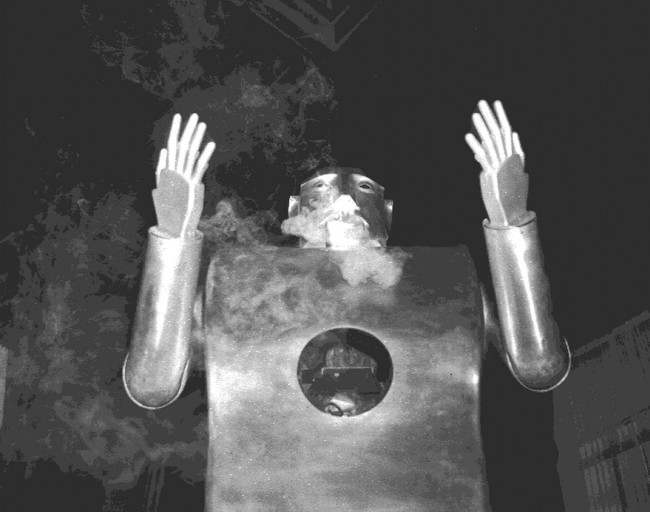
Elektro, a robot made by Westinghouse, smokes at the 1939 World’s Fair in New York. Elektro could count on its mechanical fingers, smoke cigarettes and sweep a house clean. The 1939 World’s Fair introduced Americans to a technological vision of the future.
The Fair would showcase “The World of Tomorrow”.

Formerly a New York World’s fair excursion bus, the “Spectroheliogram,” was converted after the fair closed, to be used to shuttle WAACs to and from work at the armored force replacement training center, July 26, 1949 in Fort Knox, Kentucky. (AP Photo)
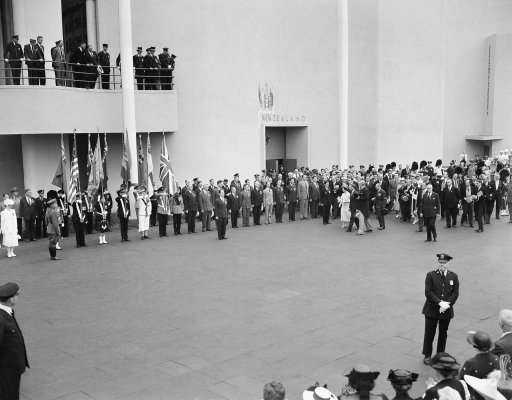
King George VI and Queen Elizabeth strolled in front of the New Zealand exhibit at the New York Worlds Fair when they visited the international exposition on June 10, 1939. Their majesties made a quick trip through most of the British and Dominion exhibits during their tour of the fair.

Four million people gave an almost hysterical welcome to the King and Queen in New York. More than a million school children waved British and American flags. Their majesties drove up the west side highway on their way to the New York World’s Fair. Against a typical New York background of Skyscrapers, and preceded by a motorcycle police escort carrying a Union Jack, the Royal procession passes along the west side highway in New York City towards New York World’s Fair on June 10, 1939.
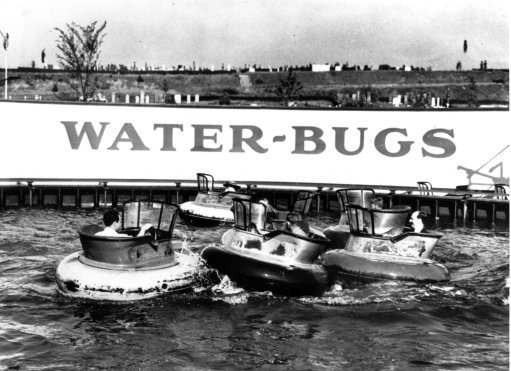
Bumps and laughter enliven one of the Fun Zones’s many novel rides at New York’s World Fair in 1939.

Rosalie Fairbanks, a guide to the New York World’s Fair, points to the theme of the exposition — the Trylon and Perisphere — in New York on February 22, 1939, after the entire sheath of scaffolding was removed for the first time.

Shifts covering full 24-hour period were in effect as work was rushed on the filling in of land for the New York World’s Fair in Flushing, New York, on December 16, 1936.

The Coronation Scot, in America for the New York World’s Fair, made several runs between Washington and Baltimore, where she awakened considerable interest. The Coronation Scot stops here on a bridge near Washington, alongside the famous American train Royal Blue, on March 27, 1939.

Visitors ascend the “electric stairway” in the Hall of Power at the Westinghouse Building at the World’s Fair, on May 8, 1939. (AP Photo/Westinghouse)

Presentations are made to Britain’s King George VI and Queen Elizabeth in the British Pavilion, during their visit to the fair in New York, on June 19, 1939.

A workman at New York World’s Fair repaints the famed Perisphere, on June 6, 1939. (AP Photo)
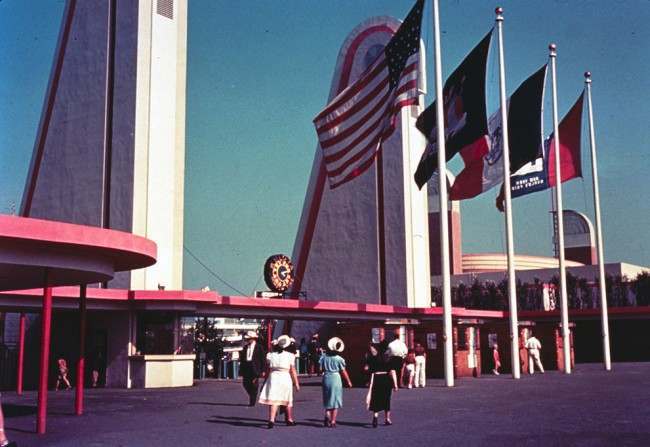
Color view of the 1939 World’s Fair. Corona gate with Bulova clock, ca 1939.
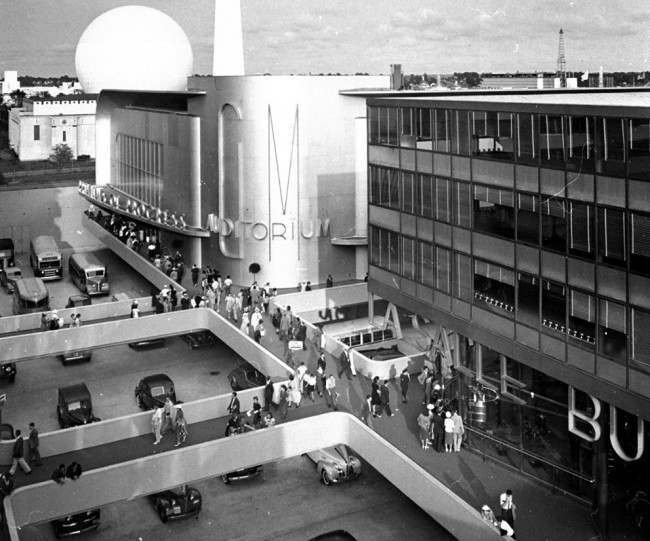
The entrance to General Motors’ Exhibit at the New York World’s Fair of 1939-1940. The exhibit attracted nearly 25 million visitors.

Futurama, the model city of 1960, designed by Norman Bel Geddes for the General Motors Exhibit at the New York World’s Fair in 1939. This photograph shows an elevated view of the huge model of a futuristic city with widely spaced skyscrapers, double-decked streets with moving cars representing traffic patterns, and parks and landing pads for helicopters and auto-gyros shown on the roofs of low buildings.

“The Road of Tomorrow,” an elevated highway of cork and rubber composition, at the Ford Exhibit at New York’s World Fair in 1939. (AP Photo)
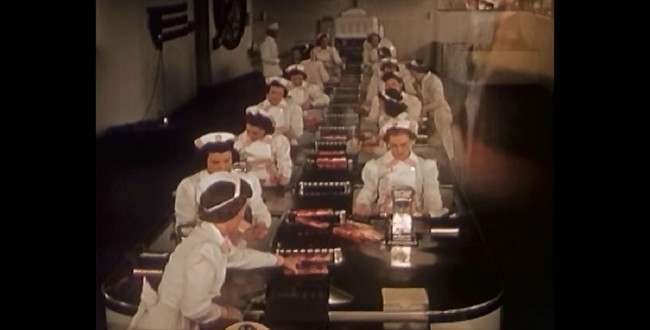
Workers in an exhibit use modern techniques to package bacon for Swift Premium Meats.
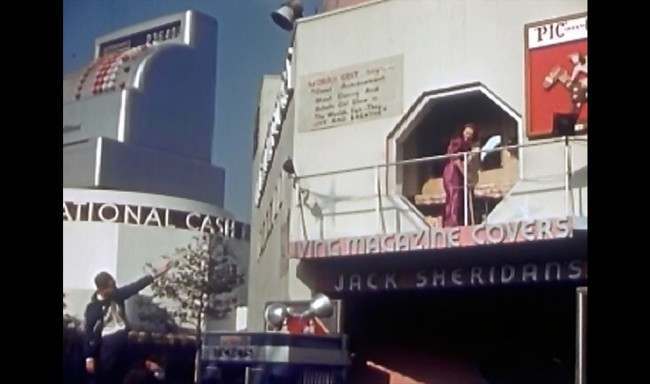
Jack Sheridan’s “Living Magazine Covers” exhibition, where, for a fee, one could enter and photograph topless models posing in sets designed to look like contemporary magazine covers.


The second and last season of this edition of the New York World’s Fair closed on October 27, 1940. Unfortunately, events in Europe were descending into a second World War, and budget overruns ended up leaving the World’s Fair as a financial failure. Shown here is a view of the View of the Trylon and Perisphere being dismantled in New York, on January 23, 1941. (AP Photo)
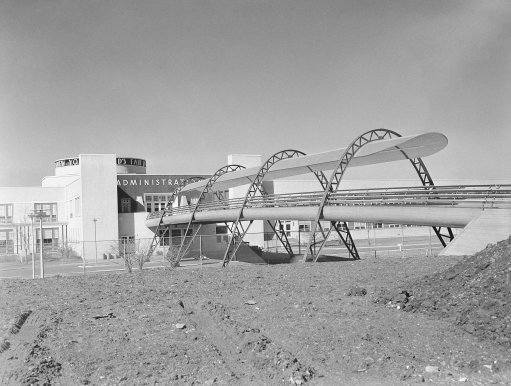
Architectural in front of a building only slightly more conventional is a bridge leading from the administration building to the exhibit area of the New York Worlds Fair on Feb. 21, 1938. (AP Photo)
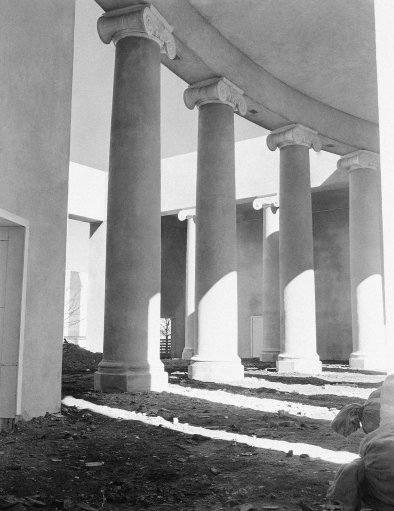
These Grecian Ionic columns of the business administration building lend a note of ancient beauty and simplicity to the fair which is marked, for the most part, by the outlandish modern design of its architecture shown Feb. 21, 1938. (AP Photo)

Rear view of the shelter building at the World’s Fair in Flushing, New York on Feb. 22, 1938.
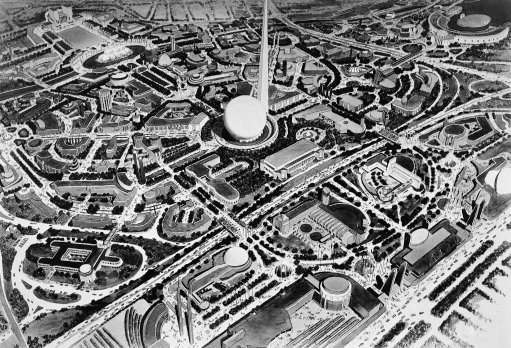
A New York Worlds Fair artist has produced a preview-Air view of the Fair grounds as they will appear on April 30, 1939, the date of scheduled opening. Many of the roads and 46 of the buildings are under construction or now completed. The $150,000,000 exposition covers a 1,216-acre site-about one-third of the area shown April 22, 1938. The theme the 18-story perisphere and 700-foot Trylon, in the center is well under construction. (AP Photo)
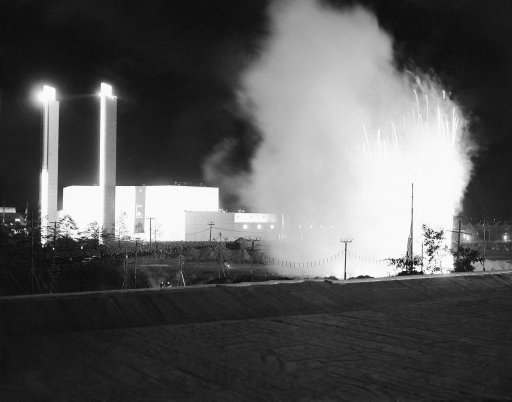
One of displays of fire work which dazzled 600,000 persons, one of the largest ones ever gathered in this city on May 8, 1938, site of the New York Worlds Fair, 1939. Display was part of the fairs preview.

Arlene Warner, queen of beauty of Elgin, Ill., presided at opening ceremonies of the Elgin Time Observatory at the New York Worlds Fair on May 10, 1938. She is unveiling a heroic figure of Time, represented as a Nubian slave striking a gong sculptured by Bernard J. Rosenthal of Chicago.
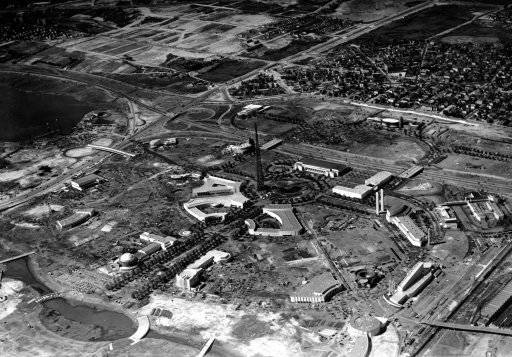
This is an aerial view of the 1939 New York World’s Fair site during construction in Flushing Meadows, Queens on May 17, 1938.
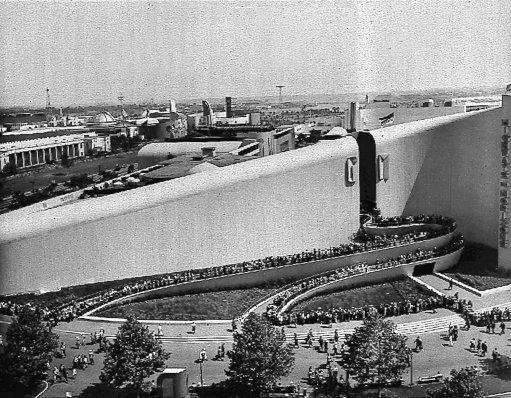
Visitors to the 1939 World’s Fair in New York wait in long lines outside the General Motors Futurama exhibit, a ride across the face of America as it might appear in 1960. In the early decades of this century, forecasters had so much material to work with a world that seemed to be tripping over itself with progress, bursting with inventions every day.
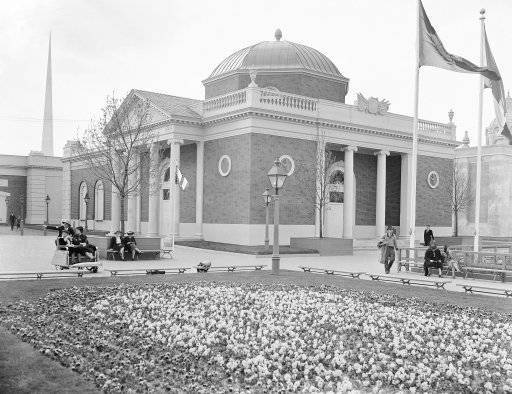
Scene in the court of peace international section of New York worlds fair in 1939, where President Roosevelt, speaking from the rostrum federal building (in background) an estimated 35,000 guests of after the fair opened its gates April.
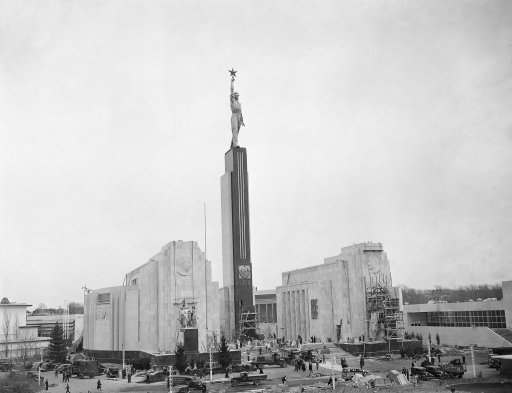
General view of the Russian pavilion at the New York World fair, one of the last exhibits to be completed for opening of the exposition on April 30, 1939. A theater and a restaurant are incorporated in the semi-circular structure, and the exhibits and activities, and the exhibits and activities are designed to show the Russias peoples.
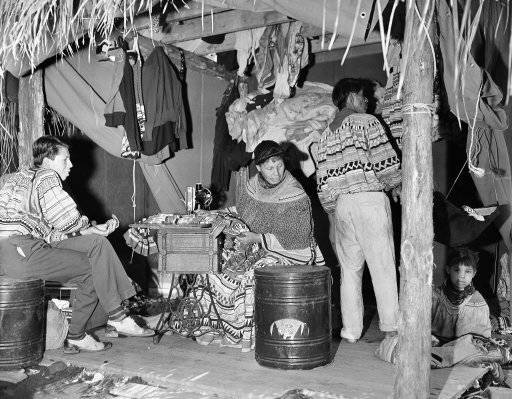
A group of Seminole Indians from the Florida Everglades have pitched their camp at the New York World’s Fair where they loom as one of the attractions of the amusement zone, April 25, 1939. A family scene in one of the native huts, where an ancient sewing machine adds a modern note. (AP Photo)
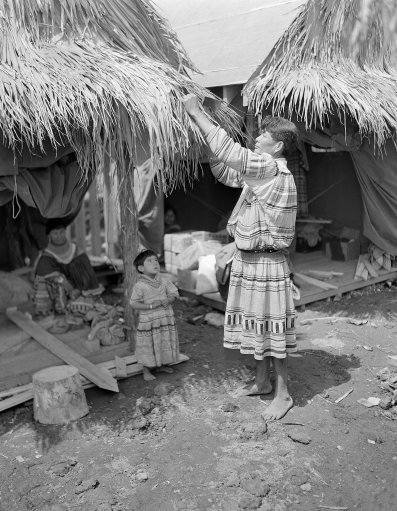
Although the theme of New York’s World’s Fair is “The World of Tomorrow,” a band of Seminole Indians from the Florida Everglades loom as one of the big attractions in the amusement zone where they live in a primitive village, shown April 25, 1939. Billy Homespun, medicine man and acting chief of the tribe, fixes the roof of his grass hut as a youngster looks on. (AP Photo)

Newspaper publishers meeting in New York on April 25, 1939 dedicated a statue, left, representing freedom of the press which is one of four symbolizing as many freedoms those of press, assembly, speech and religion at the New York Worlds Fair. In the background are the Trylon and perisphere, symbols of the New York World Fair. The statue was executed by Leo Friedlander. (AP Photo)

A nickel silver bust of Franklin D. Roosevelt was unveiled on April 26, 1939 in the sculpture court of the Federal Court of the Federal Building of the New York Worlds Fair by Mrs. Sarah Delano Roosevelt, the Presidents Mother, left, Edward J. Flynn, U.S. commissioner to the fair, is in the center with Walter Russell, the sculptor, at right. This is the first large piece of sculpture to be made in this medium. (AP Photo)
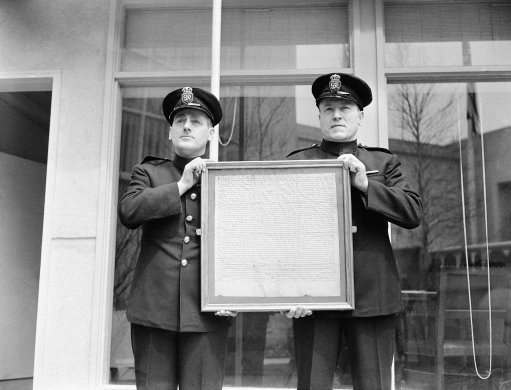
Here are two guards at the British Building supervising the installation of a copy of the famed Magna Carta as one of the exhibits at the worlds fair in New York on April 29, 1939. The fair was set to open on April 30. (AP Photo)
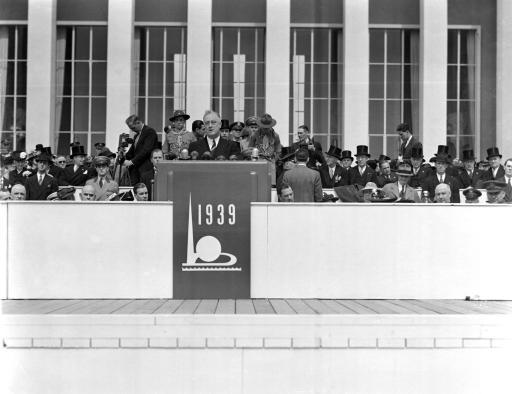
U.S. President Roosevelt speaks at the opening of the New York World’s Fair, April 30, 1939. (AP Photo)

The Brazilian building at World’s Fair named in New York, houses the Brazilian exhibit at the Fair which opened officially, April 30, 1939. (AP Photo)

Photo shows a crowd of people inspecting part of the state of Washington’s exhibit at the New York World’s Fair shortly after it opened April 30, 1939.
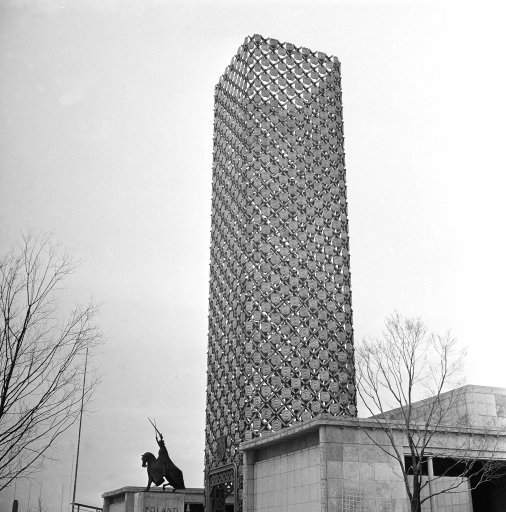
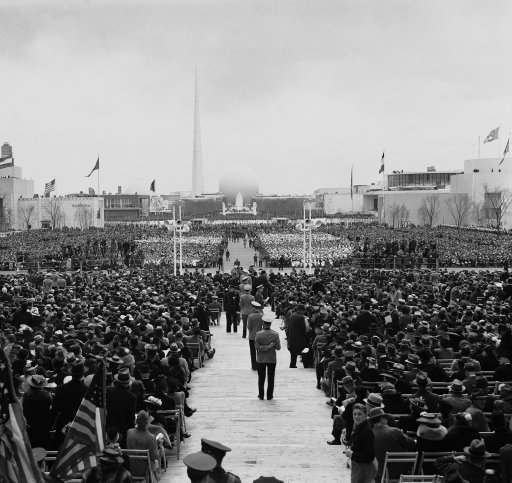
President Roosevelt opened on April 30 the New York world’s fair. He emphasized it as typifying America’s desire for peace and peaceful trade. A general view of part of the 35,000 guests of honor who listened to the president’s opening speech in the “court of peace” at the New York world’s fair on April 30, 1939.
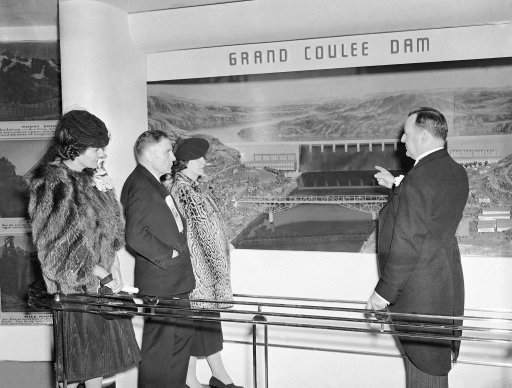
These prominent representatives of the state of Washington are looking at a diorama of Grand Coulee dam, part of their states exhibit at the New York Worlds Fair on May 1, 1939, after opening day ceremonies on April 30. Shown (left to right) are Mrs. E.B. McGovern, U.S. Senator Homer Bone (D-Wash), Mrs. Bone, and Comm. E.B. McGovern, Representing the governor. (AP Photo)

The dedication of the polish pavilion and a monument to the famous polish king Wladyslaw Jagiello (in background) featured Polands day at the New York Worlds fair on May 3, 1939. Here Antoni Roman, polish minister of industry and commerce, is speaking at the dedicatory exercises which were attend by count Jerzy Potocki, polish ambassador to the United States, the official polish delegation, and close to 1,000 others. (AP Photo)

Exterior view of WPA building at Worlds Fair in New York on May 3, 1939. (AP Photo)

View through gulle leading into amphel theatre of WPA building at Worlds Fair New York on May 3, 1939. (AP Photo)
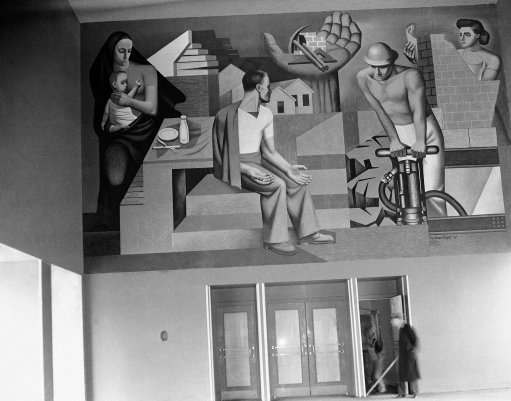
Mural in entrance shows problem of WPA with empty handed workman at left and then work created at Worlds Fair in New York on May 3, 1939. (AP Photo)
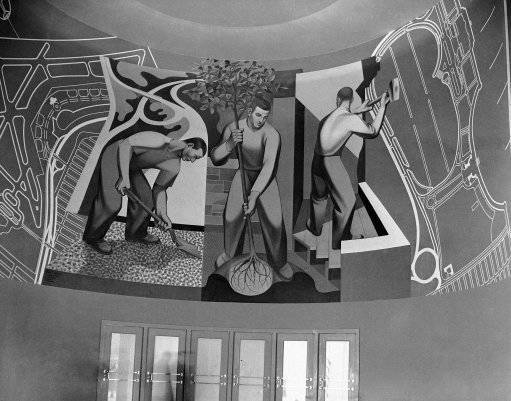
Mural in entrance of WPA men planting trees, building parks etc., blue print at left is of North Beach airport, at Worlds Fair in New York on May 3, 1939. (AP Photo)

This view of the British pavilion at the New York worlds fair was taken soon after its opening and shows diners on the terraces of the building on May 4, 1939. (AP Photo)
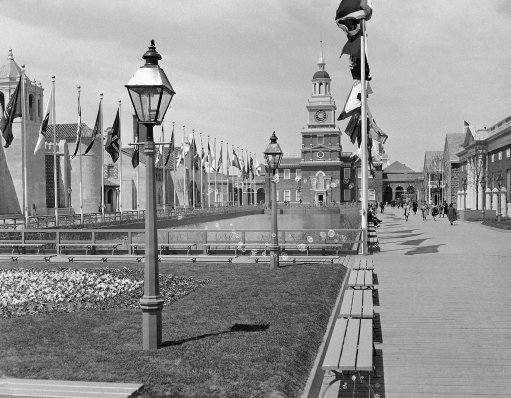
This view down the court of states at the New York Worlds fair on May 4, 1939 shows the Pennsylvania Building, which is a replica of Philadelphias famed independence hall. (AP Photo)

This is a general view of Brazilian building at the New York Worlds Fair as it was dedicated, May 7, 1939. (AP Photo/John Lindsay)

Jamming every inch of space in the huge Hall of Electrical Living at the Westinghouse Building at the Worlds Fair in New York on May 8, 1939, crowds stand 6 deep on the sidewalk outside the glass-enclosed structure to watch Elektro, the Westinghouse Moto-Man, perform his 26 mechanical tricks, including, walking, talking, smoking a cigarette and counting. (AP Photo)
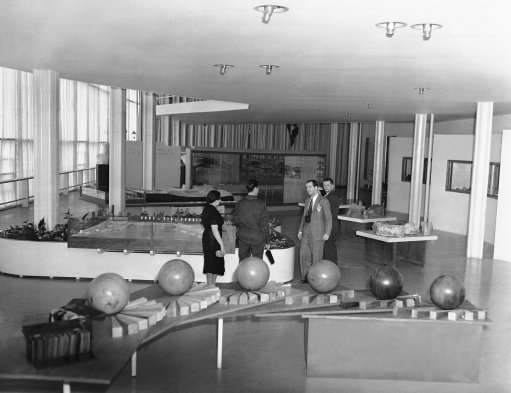
These wooden products manufactured from Brazilian jungle timber, make up a part of the Brazil exhibit at the New York Worlds Fair, shown May 8, 1939. The picture was taken as the building was dedicated May 7. (AP Photo/John Lindsay)
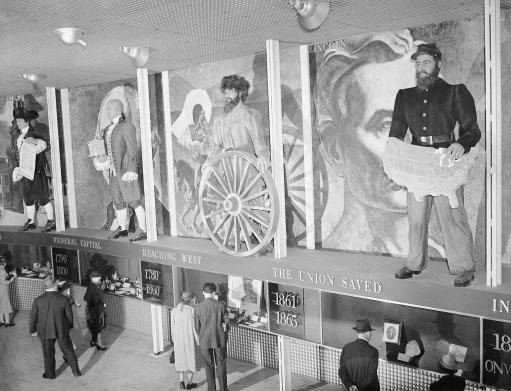
Heroic figures and murals at the Pennsylvania Exhibit at the New York Worlds Fair on May 11, 1939 depict the progress of that state from colonial times to the present. (AP Photo)
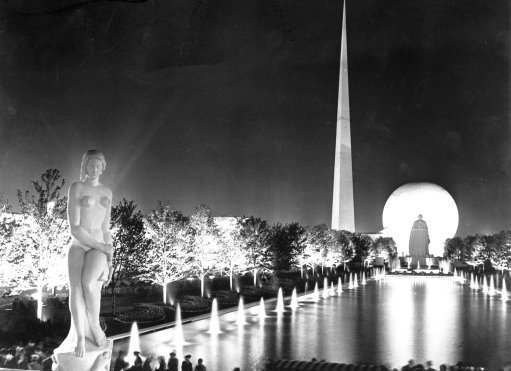
Unique lighting produces this scene on Constitution Mall at New York’s Worlds Fair, May 13, 1939. In the foreground at the left is the statue

Eleven-year-old Jang Krishnan of Borneo and his agent, Beryl Roach, arrive at Newark Airport, N.J., May 16, 1939. Jang is on his way to the World’s Fair in New York to exhibit his unusual trait; a working finger on his lower back. Here he holds a pencil with the finger-like appendage (AP Photo/Ralph Morgan)
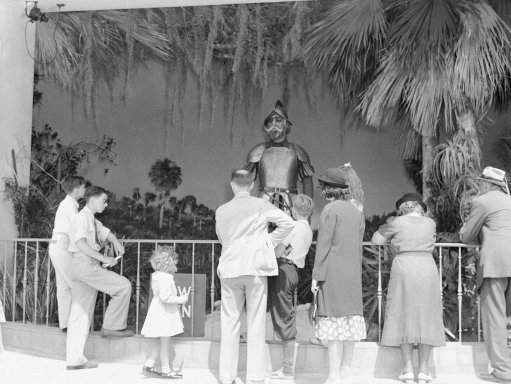
This is the entrance to Floridas building at the New York Worlds fair on May 30, 1939 and the visitors are listening to a statue of Ponce de Leon, equipped with a mechanical voice and an animate mouth, giving a sales talk on the Everglade state. (AP Photo)

This general view of the entrance to the Florida exhibit at the New York Worlds fair shows visitors entering the building on May 30, 1939. In background is 72-tube carillon tower, which the Florida exhibitors claim is the worlds largest. (AP Photo)
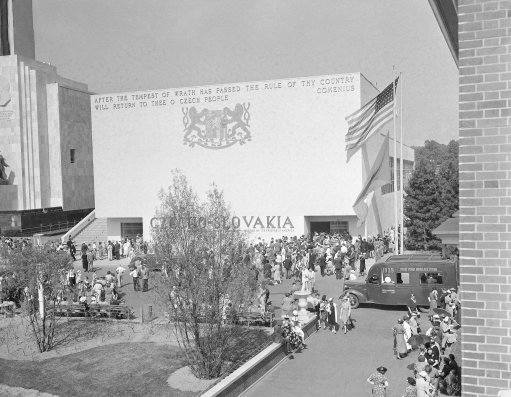
This is the Czecho-Slovak pavilion at the New York Worlds Fair as it was dedicated on May 31, 1939. The ancient prophecy at the top of the building is from the worlds of the medieval scholar Comenius. Similarly emblazoned in gold on the lower portion of the facade is the inscription Begun by the republic of Czecho-Slovakia and finished by friends of Czecho-Slovakia in America. (AP Photo)
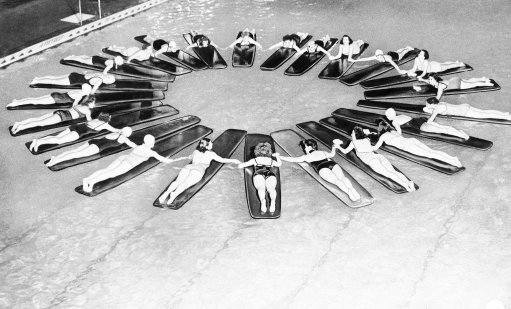
Swimmers in Billy Roses Aquacade at the Marine Amphitheatre at the New York World fair on June 10, 1939. (AP Photo)
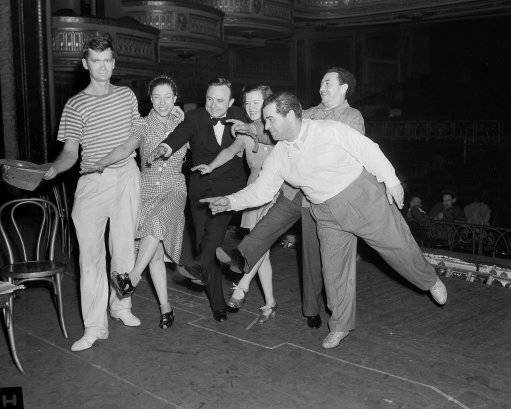
Some of the stars of “Yokel Boy” show Gov. E. D. Rivers of Georgia how to dance in the line of a musical comedy in New York, June 14, 1939. The Gov. is in New York to see his state’s exhibit at the World’s Fair. Left to right are: Buddy Ebsen; Judy Canova; Gov. Rivers; Dixie Dunbar; Jack Pearl and producer Lew Brown. (AP Photo)
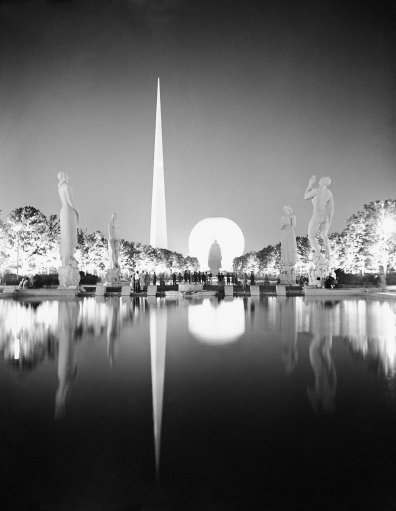
A view taken from the side of one of the many lagoons at the New York worlds fair on July 7, 1939. Light, brings out some of the wondrous beauty as erected at the world of tomorrow. The famous state of George Washington is subtly ed against the lighted globe-perisphere. Left background is the tall Trylon, about the lagoon stands heroic on Saturday.

Niels Bukh’s team of famous gymnasts, from Copenhagen, appear at the Denmark Day ceremonies at the New York World’s Fair, performing their precision exercise on the Court of Peace on July 10, 1939. (AP Photo)
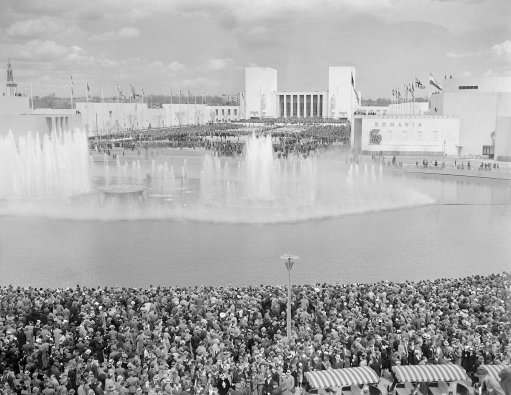
The splendor of the New Yorks World Fair in 1939 was evidenced, showing the entrance to the Court of Peace and the Lagoon of Nations where a nightly fountain displays of many colors was a featured event. Now there is nothing left but a sunken roadway and a rotting bridge across the lagoon, now Flushing creek. (AP Photo)
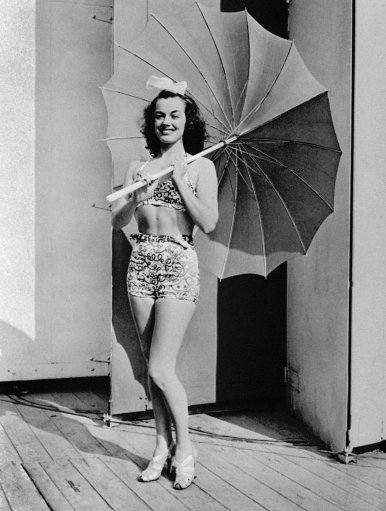
Swimming champion Eleanor Holm, star of Billy Rose’s Aquacade, appears at the World’s Fair of 1939 in New York City on November 4, 1939. (AP Photo)
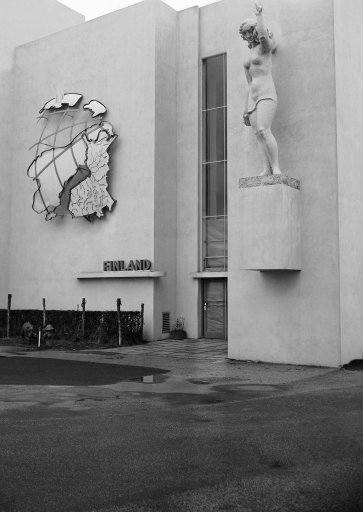
Finnish Pavilion on Court of Peace at World’s Fair in Flushing, New York on Dec. 11, 1939. (AP Photo)
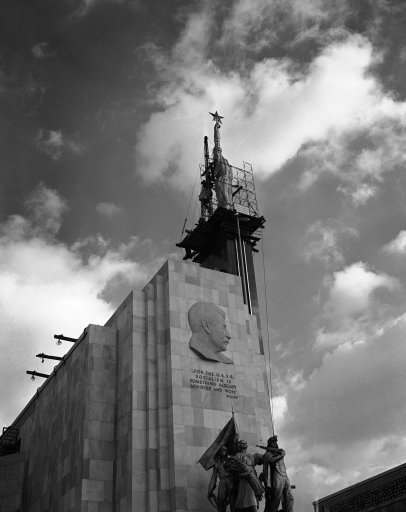
The huge statue, perched 270 feet above ground over the Russian building at the New York World’s Fair on January 2, 1940 as it is being taken apart. It is the first step in tearing down the building, all of which will be shipped back to Russia, who refused to accept an invitation to keep the exhibit at the fair for next season. (AP Photo)
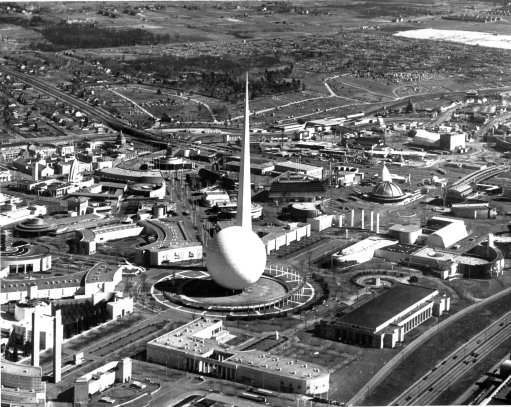
This is an aerial view of The New York World’s Fair taken May 8, 1940. (AP Photo)
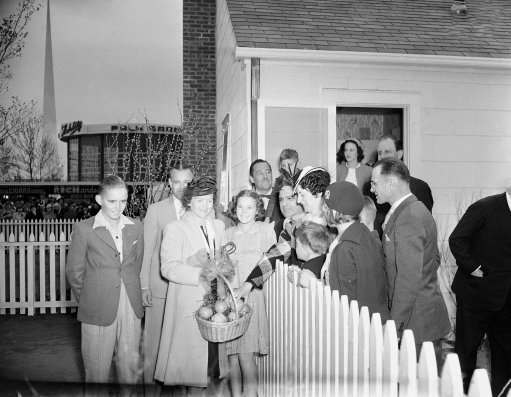
First of 48 families from every state to occupy homes at the New York worlds fair was the Howard L. Burdin family of Miami, Fla., as the 1940 exhibit opened on May 11, 1940. Shown, on left side of front fence at the home, are, left to right, Jimmy Burdin, 14; Howard Burdin, Mrs. Howard Burdin and Elsie, 12. Over the fence to right, greeting the family, are, Grover Halen, President of the fair, Mayor F.H. LaGuardia of New York and his family and Joseph P. Moushey of Seattle, Wash., and his family, who were first occupants of another home. With Mr. and Mrs. Moushey are Joseph, Jr., 12 and Herbert, 5. (AP Photo)
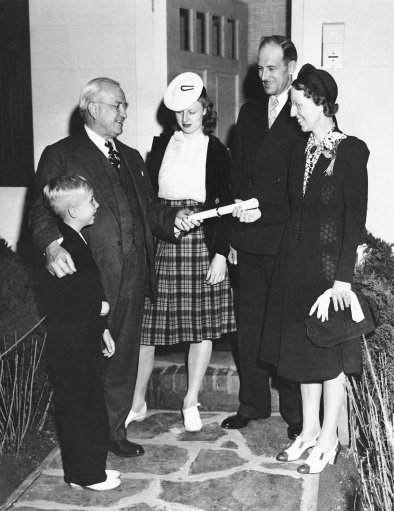
Harvey Gibson, New York worlds fair chairman, as he hands Mrs. Herbert woods of Ogden, Utah on May 27, 1940, a specially embossed lease to a model Fha-approved home where the woods family will live as the fairs guests for a week. Left to right: Herbert Woods, Jr., Gibson, Alice Woods, Woods and Mrs. Woods. (AP Photo)
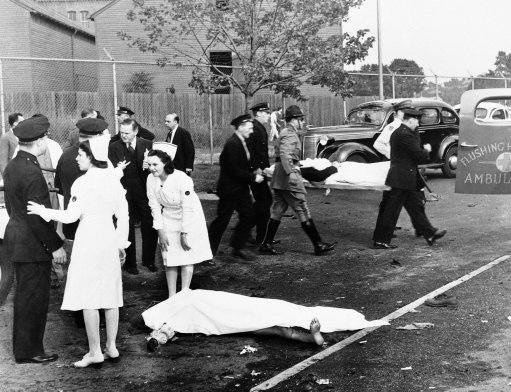
One of two policemen killed by a bomb explosion at the New York world?s fair on July 4, 1940, is shown as his body was removed to an ambulance. The blast ripped most of the clothing off the victim in the foreground. One of his shoes may be seen at the curb. The bomb, disguised as a portable radio set, was found in the British Pavilion and to the lawn near the polish exhibit when in exploded, killing two and injuring several.
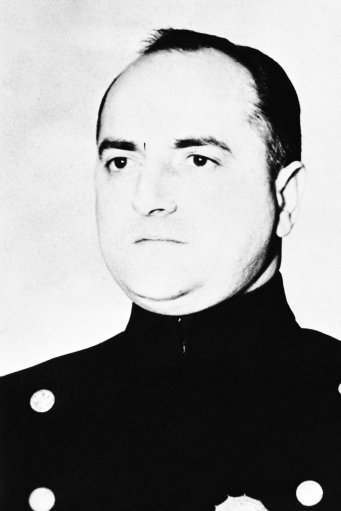
Detectives Ferdinand Socha, were killed by the explosion of a bomb they were examining at the rear of the polish pavilion at the New York world?s fair on July 4, 1940 after it was discovered in and removed from the near-by British pavilion. Five others were injured. The bomb, a flame-throwing type, was disguised as a portable radio.
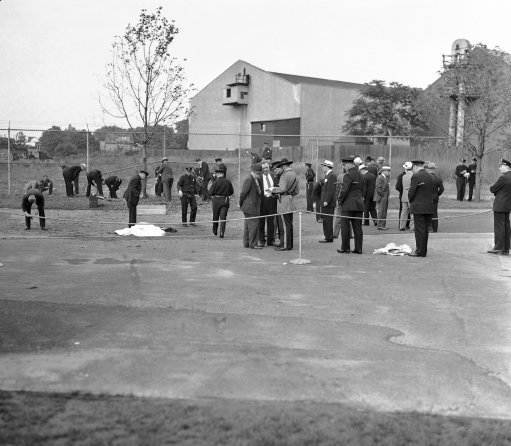
At the scene of the World?s Fair bombing in New York on July 4, 1940.

A policeman stands over the holster and revolver of one of two detectives who were killed by a bomb, found in the British Pavilion at the New York world?s fair on July 4, 1940, which exploded as officers examined it in the rear of the polish exhibit. The holster and most of the clothes were torn off one of the detectives by the flame-throwing bomb. Five others were injured by the blast.
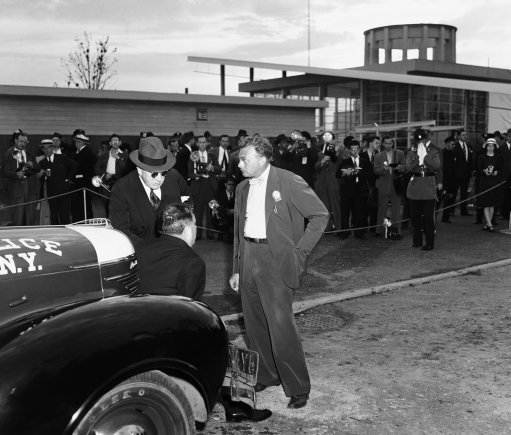
Fair bombing explained to LaGuardia detective Fred Morelock, right, explains to Mayor F. H. LaGuardia, seated on auto bumper, and police commissioner Lewis J. Valentine, left, how he removed a time bomb from the British pavilion at the New York worlds fair on July 4, 1940 after it had been found by an attendant. After the bomb had been removed to the rear of the polish pavilion and detectives were examining it. The bomb exploded, killing two and injuring five.

New York City detective Frederick Morelock has his left shoulder patched up at flushing hospital on July 5, 1940, after a piece of metal from a bomb which exploded on July 4 at the New York world?s fair tore into his flesh without his feeling it. Morelock was in the group of policemen removing the bomb from the British Pavilion and had stepped away to report to a superior when the bomb went off killing two policemen and injuring four others. He said on July 5, he didn?t know he had a wound until he took off his shirt.

National women’s champion Helena Mroczkowska, 22, of Hicksville, N.Y., poses in front of the leader board at the start of a fencing championship at the World’s Fair in New York in Sept. 15, 1940. Mroczkowska Dow, a four-time national fencing champion and a former U.S. Olympic member, has died of cancer Wednesday, Arpil 22, 1998. She was 80. Dow, part of a famous Olympic family, won the first of her four Amateur Fencers League of America national foil championships in 1940. She also won the title in 1943, 1947 and 1948.
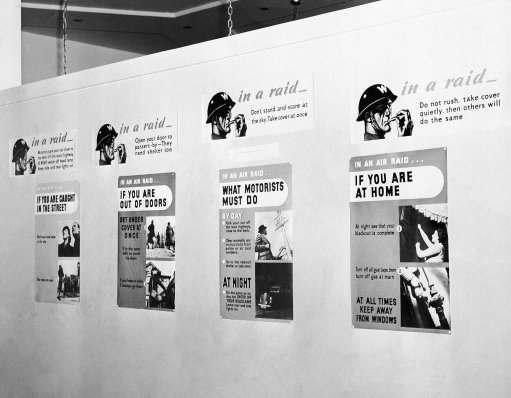
Here are air raid warnings, posted in English cities, as they appear at the British pavilion of the New York worlds fair Sept. 3, 1940. Each poster has a warning covering most of actions of civilian populations.
MORE:
Would you like to support Flashbak?
Please consider making a donation to our site. We don't want to rely on ads to bring you the best of visual culture. You can also support us by signing up to our Mailing List. And you can also follow us on Facebook, Instagram and Twitter. For great art and culture delivered to your door, visit our shop.


